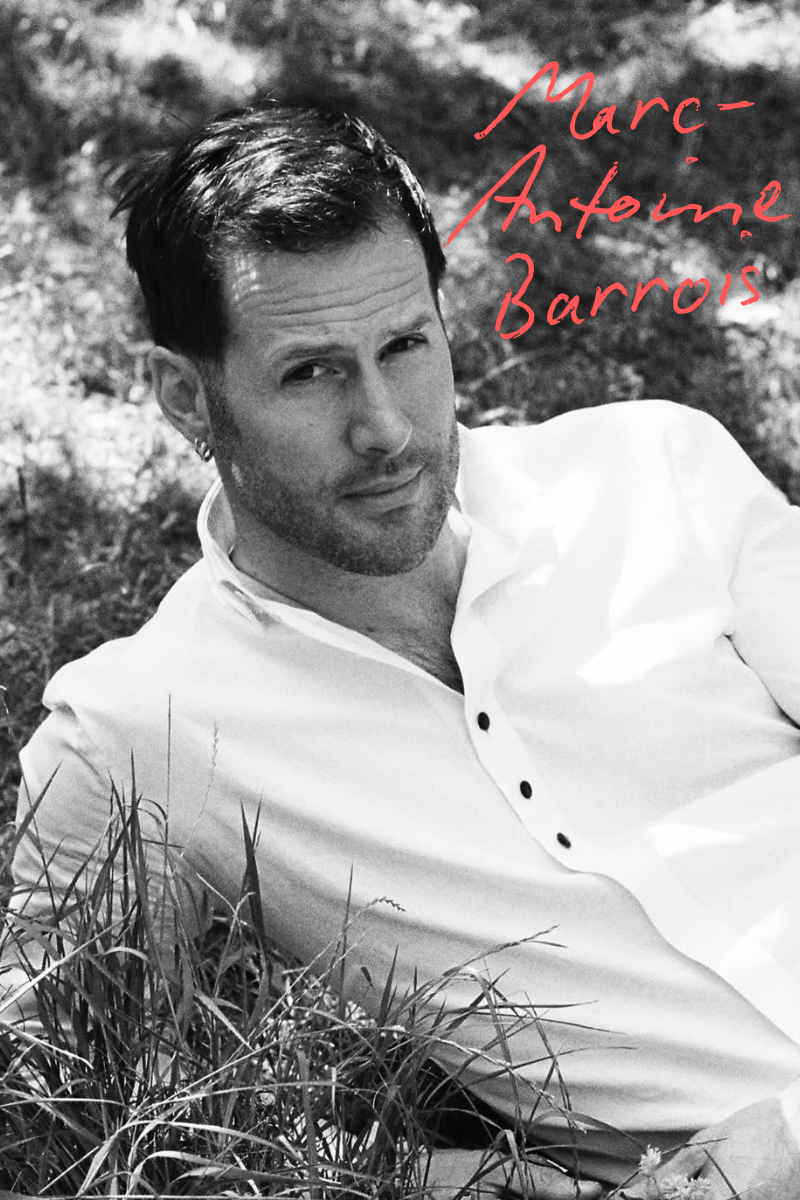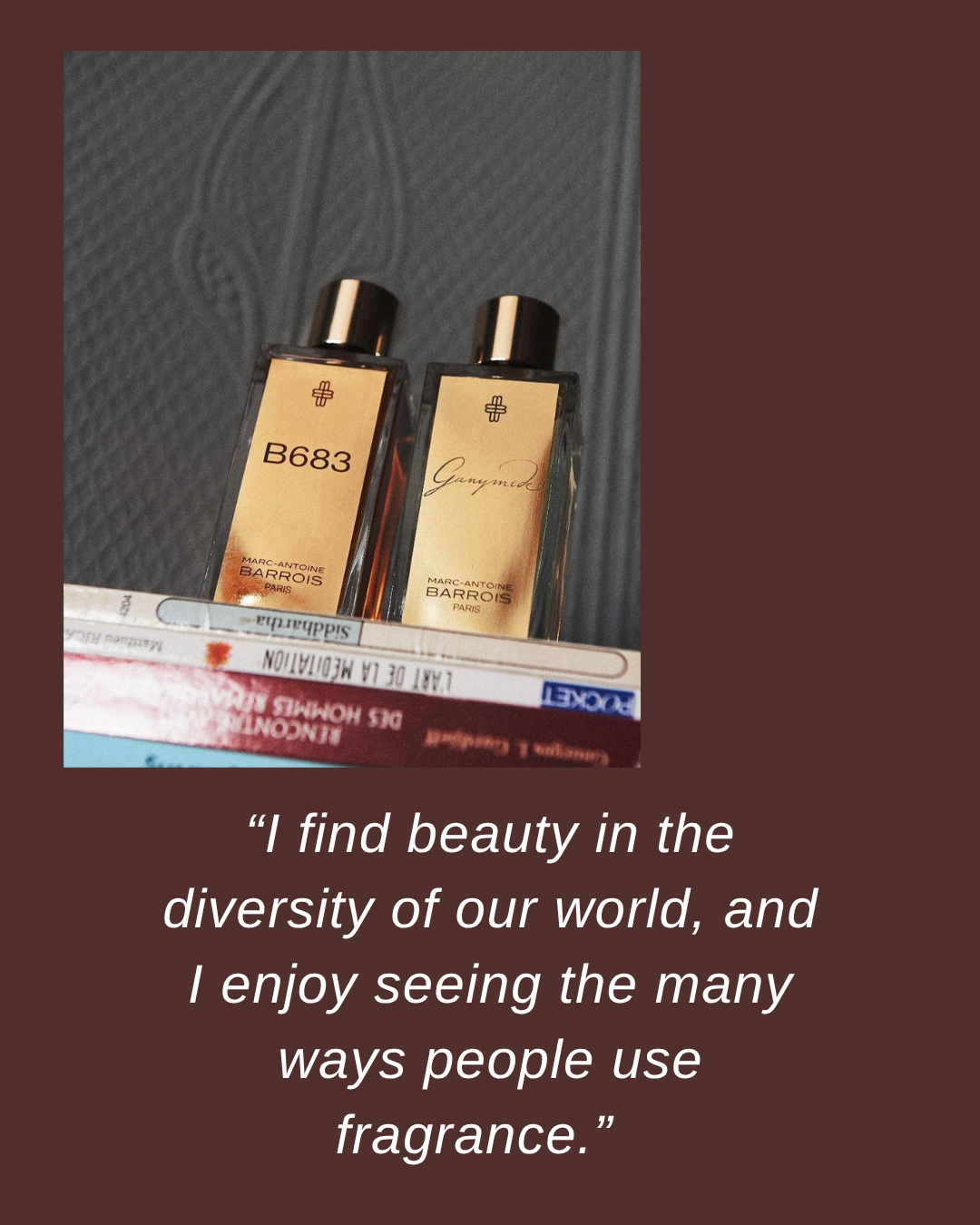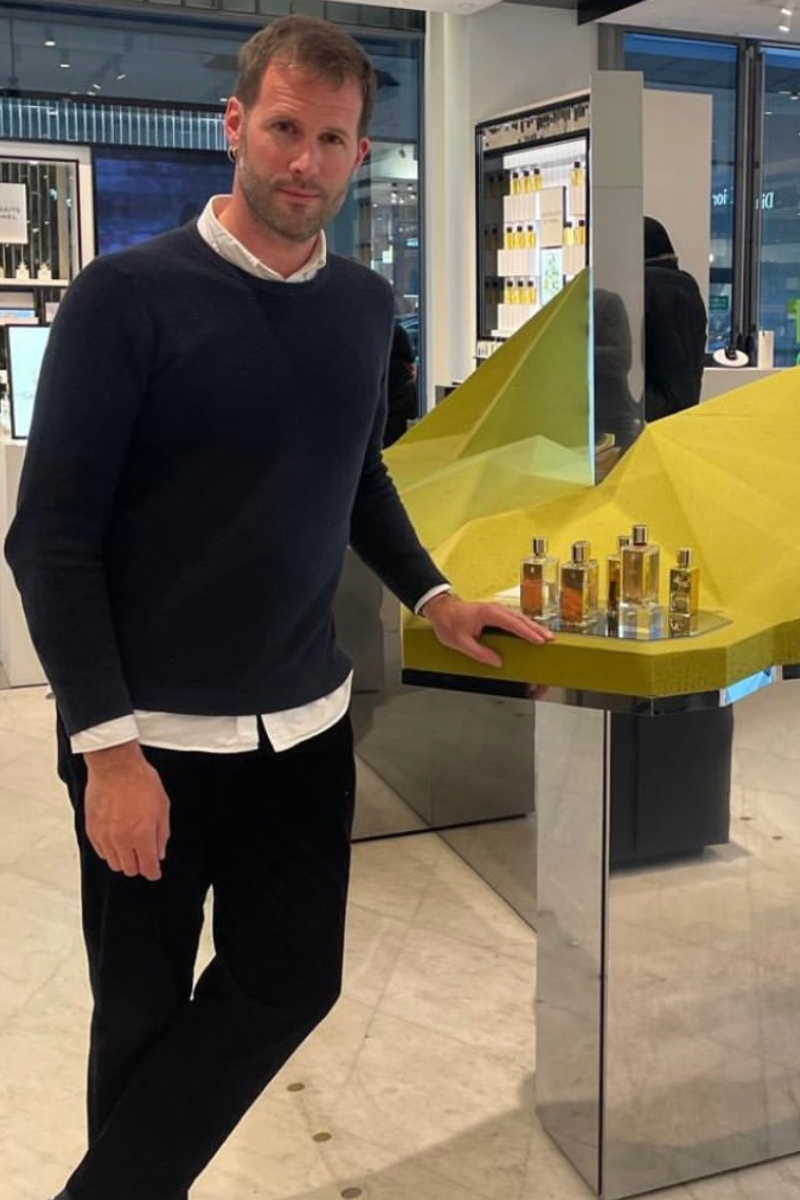The Emotional Power of Fragrance: Marc-Antoine Barrios on Scent & Identity
This article is part of TruForm, an ongoing series with creative minds exploring the emotional layers of how we dress, dwell, and define ourselves in ways that bring us closer to true form.
In this conversation, we explore how couturier-turned-perfumer Marc-Antoine Barrois sees scent as a way to express identity, evoke memory, and invite imagination—viewed through a psychological lens on how fragrance shapes emotion and self-perception.
At Trulery, we’re drawn to designers who see aesthetics as a way to express something deeper. They intuitively understand the psychological impact of aesthetic choices. Whether it’s scent, silhouette, or space, these elements can become tools for shaping identity, sensory experiences, and emotional expression. Marc-Antoine Barrois, the French couturier and perfumer behind some of the most emotive scents in the luxury space, designs with this kind of intention in mind. In this conversation, he shares how scent becomes a medium for memory, emotion, and imaginative escape, and how he approaches creating fragrance with the same care and storytelling as couture.
1. What drew you to fragrance as a next chapter after couture? Was there a specific moment, or did it feel like a natural extension of your work in design?
MAB: Scents, and especially scented memories, have always been an important part of my dreams. The magical ability a scent has to transport you in a second, or to bring back to life someone I once loved, always fascinated me. When I opened my first store, I knew I wanted to create an olfactive signature for my brand. The missing piece was finding the right perfumer I could trust as a co-artist. When I met Quentin Bisch, it was a creative crush—he's not just talented, he's a true artist!
Psych Insight: This taps into affective memory—the way our brains hold emotional experiences through the senses, where a single scent can unlock an entire feeling or moment. For Barrois, fragrance isn’t just aesthetic; it’s a way of bringing the past back to life through scent.
2. Couture and fragrance seem like very different mediums. Do you find overlap in how you approach creating them?
MAB: I do! I don't like when people compare perfume directly to a garment—it feels too simplistic—but I approach creating a fragrance much like I do a collection. It’s about telling a new story, creating a new imaginary universe, bringing elements together in secret, and then releasing it into the world. Once it's out there, it doesn't belong to me anymore. It belongs to all of you.
Psych Insight: Here we see narrative identity theory at play—the idea that we all create a story of self in our minds. Barrois builds immersive experiences that invite the wearer into a narrative. One that can become part of how they see themselves. It also reflects dramaturgical theory, where identity is performed through sensory cues like scent and clothing.
3. Your scents like Ganymede and Aldebaran are associated with cosmic destinations. Do you imagine a narrative behind each fragrance when you create it?
MAB: Ganymede and Aldebaran have a mythological energy that adds poetry to the fragrances, but what really excites me is creating fantasy worlds. I prefer to choose names of asteroids, stars, or planets that evoke no specific image or souvenir. This gives people space to dream their own imaginary worlds. In a world that can feel so Cartesian and rigid, freeing the imagination feels magical. It’s part of my DNA.
Psych Insight: This reflects symbolic interactionism—the idea that we make sense of things through shared cultural references. By using open-ended, unfamiliar names, Barrois invites people to project their own meanings onto the scent. But those meanings don’t come from nowhere—they’re shaped by culture, memory, and language, and become a quiet form of communication between the person and the world around them.
4. The Milan installation for Aldebaran seemed like a surreal, immersive experience. How important is that sense of journey to how people experience your brand?
MAB: At Milan Design Week, I created an art installation designed to spark an emotional response. I wanted people to connect those feelings to a new olfactive memory: the scent of ALDEBARAN. Each of my stores—in Paris, London, and hopefully soon New York—is imagined as an artist’s inner world. I love the idea of people leaving their adult selves at the door and stepping inside with a child’s sense of wonder.
Psych Insight: This draws from design psychology—particularly how space design can shape mood, perception, and openness to experience. Barrois uses immersive environments to gently disrupt routine ways of thinking and invite emotional engagement, curiosity, and imagination.
5. Fragrance is deeply personal, but it also shapes how others perceive us. When you create a scent, do you think more about how it makes someone feel in their own skin, or how it might shape how they’re perceived?
MAB: I believe fragrance is an altruistic gesture. When you wear a scent long enough, you barely smell it. It becomes part of you, part of your silhouette, something others recognize and remember. I like to prioritize the lasting power and diffusion of a fragrance over the initial "wow effect." These are scents designed for people to truly live with.
Psych Insight: This reflects both embodied cognition and symbolic interactionism. A scent can shape how you feel in your own skin, and over time, it becomes something people associate with you. Even if you stop noticing it, it’s still part of how you show up and how others remember you.
6. People often reach for different scents to match their mood, season, or time of day. Do you see each scent as living in its own mood or moment?
MAB: Not at all. I find beauty in the diversity of our world, and I enjoy seeing the many ways people use fragrance. Some wear it for a trip and it becomes a souvenir. Others for a mood, a lifetime, or a collection. I think all of that is wonderful. But I don’t design perfumes for a mood. I focus on making something exceptional, sincere, and respectful. Sincere means I have to be in love with it to launch it—and once I am, I put all my creative energy into it.
Psych Insight: This reflects the role of self-regulation and sensory memory in how people use fragrance. Scents can help manage mood, capture a moment, or act as sensory markers in someone’s personal story. While Barrois doesn’t design with mood in mind, his work still becomes part of how people shape feeling and memory through scent.
7. Is there a story or place you haven't explored yet in fragrance, but would like to?
MAB: Of course! I'm only 42 and still eager to create and imagine new universes.
Psych Insight: This openness to creative expansion reflects the psychological concept of flow, a state of being fully immersed in the creative process for its own sake. Barrois’s continued drive to imagine new universes suggests deep intrinsic motivation, where creating isn’t just a means to an end, but something he’s energized by in itself.
8. If someone walked away from your work with just a feeling, what would you want it to be?
MAB: That it felt truly unique and authentic. Something refreshing in a world too often driven by marketing and dupes.
Psych Insight: Attachment theory helps explain why we hold onto certain objects. When something feels emotionally sincere and rooted in memory, it offers more than aesthetic appeal—it becomes a source of comfort and belonging. Over time, it can become woven into how we see ourselves.
Psychological Summary: Across his work, Marc-Antoine Barrois captures the emotional and psychological power of design. His fragrances serve as tools for memory, mood, identity, and imagination—blurring the line between object and experience. He taps into how scent can revive the past, influence how we feel in the moment, reflect who we are, and even shape how others see us. It’s an intuitive kind of design that doesn’t just look or smell good—it changes how we feel, and how we see ourselves.
To encounter a Marc-Antoine Barrois fragrance is to step into a world carefully crafted for emotional resonance. His creations remind us that beauty, when sincere, has the power to ground us and free us all at once. For those drawn to fragrance that lingers beyond the first impression, explore his work at Marc-Antoine Barrois.
This is an ongoing series exploring fashion and design psychology. Support contributors and keep TruForm interviews going by joining us on Patreon.
Images courtesy of Marc-Antoine Barrois via Instagram.
Written by Sarah Seung-McFarland
Sarah Seung-McFarland, Ph.D., is a licensed psychologist with a specialty in fashion and design psychology, and founder of Trulery.











